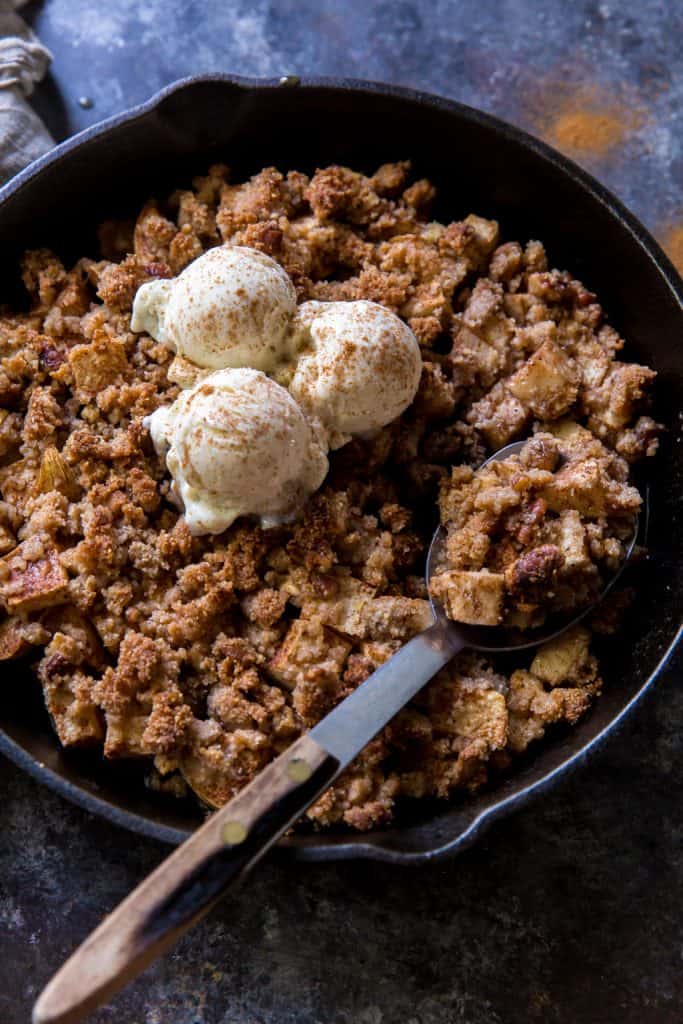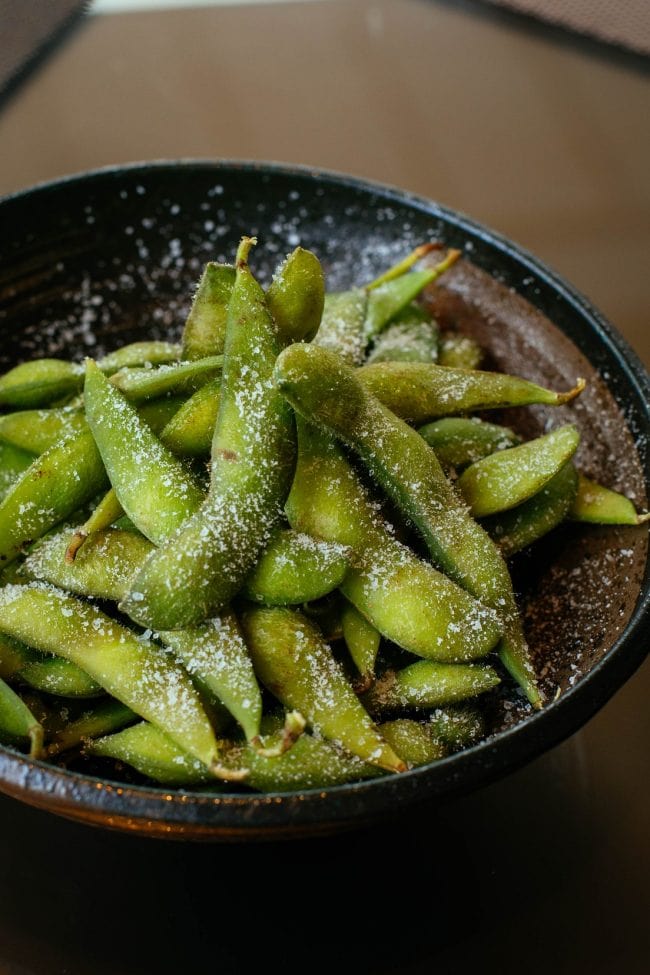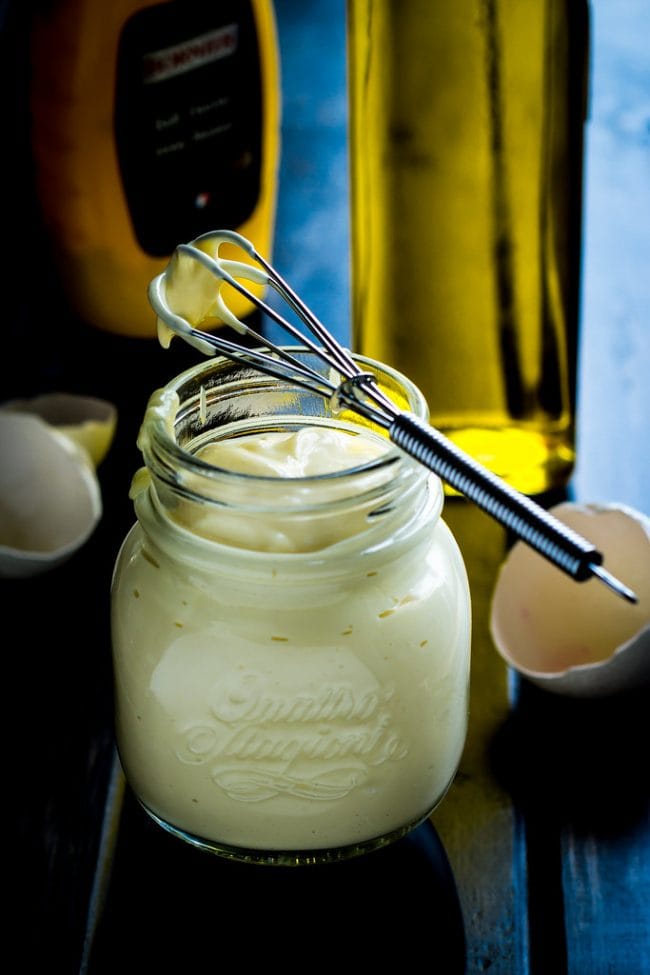Cinnamon offers several health benefits like helping to maintain normal blood glucose levels, blood pressure and protection against free radicals.
But how many carbs are in cinnamon?
In this post, I’ll cover everything you need to know about carbs in cinnamon, how you can implement it into your diet and some alternative spices.

Is Cinnamon Keto-Friendly?
KetoConnect verdict: We give cinnamon a keto-friendly rating of ⭐⭐⭐⭐(out of 5)
You can use cinnamon on a low carb diet.
Cinnamon powder is a delicious spice that comes from the Cinnamomum tree. It dates back all the way to Ancient Egypt where they used the inner bark to treat flu and throat ailments.
One teaspoon of cinnamon only contains 2.6 grams of carbs and 1.9 grams of fiber. Giving it a net carb score of 0.9 grams.
It’s a tasty option to add to your foods and desserts, working well as an alternative to sugar. You can even add a few sprinkles to your morning coffee with butter, MCT oil and heavy cream.
Many brands sell high-quality cinnamon oil and supplements that’s proven to help digestive issues, loss of appetite and diabetes. But note that it’s essential to stick to the recommended daily values because too much can increase your risk of liver damage.
You’ll find two main types of cinnamon sticks:
- Ceylon
- Cassia
Many people think of Ceylon cinnamon as true cinnamon, but it’s harder to find and more expensive than Cassia.
With Cassia, you can find it at your local grocery store, and it’s more affordable. Fortunately, they offer the same health benefits. So I’d suggest opting for Cassia cinnamon because it’s cheaper.
Carbs In Cinnamon – Cinnamon Nutrition Facts
But how many calories does cinnamon contain? Here’s the nutritional information for a teaspoon or 2.6 grams of cinnamon:
- 19 calories
- 2.6 grams of total carbs
- 1.9 grams of fiber
- 0.9 grams of net carbs
So you’re barely consuming any carbs when using cinnamon in your diet.
The Health Benefits Of Cinnamon
Although ground cinnamon offers several health benefits that’ll empower the lives of keto dieters, here are the ones that stood out:
- It makes insulin less resistive
- Cinnamon has high levels of antioxidants
- It helps manage neurodegenerative diseases
It Makes Insulin Less Resistive
A 2010 study conducted by the Journal of Diabetes Science and Technology found that daily consumption of cinnamon can lower insulin resistance.
They took Cassia cinnamon and gave participants one gram of extract per day for eight weeks. Participants’ fasting blood glucose levels were significantly lower during these eight weeks. They also tested glucose tolerance levels and found they decreased by 21%.
Another study even found cinnamon to reduce blood sugar levels as much as popular diabetes drugs.
So adding cinnamon to your diet doesn’t only improve blood sugar but lowers insulin resistance.
This helps manage type 2 diabetes. And because insulin is the fat-storage hormone, it’s much easier to lose weight. You’ll also notice that you feel fuller for longer with much more energy when using cinnamon daily.
This is because high insulin levels block leptin, the hormone that tells your body to stop eating, causing you to feel hungry all the time. But with this lower insulin level, your brain can read leptin levels properly again.

Cinnamon Has High Levels Of Antioxidants
Cinnamon trees have an ORAC score of 131,000, meaning it’s packed full of antioxidants. It also has the seventh-highest antioxidant content in the world.
Because of these antioxidant activity and antimicrobial benefits, you can use cinnamon to help fight cystic acne. I’d suggest creating a face mask containing cinnamon and raw honey and rubbing it on your face. Wash it off after a few minutes, and if you do this every day, you’ll see your acne start healing.
You could also start taking cinnamon oil drops, capsules or powder.
It Helps Manage Neurodegenerative Disease
Cinnamon extracts may help manage health problems like Alzheimer’s disease. As we age, protein fragments start building up in the brain, affecting the brain’s thinking patterns.
However, cinnamon ground contains compounds that slow this process down. These are animal studies, so we still have a lot to learn on cinnamon’s effects on the aging brain, but so far, results are looking promising.
Introduce Cinnamon Into Your Diet With Yummy Keto Rolls
This is one of my favorite keto cinnamon roll recipes. It’s easy to make and delicious. You can eat them as a quick breakfast, for dessert or when you’re on the go.
For this recipe, you’ll need:
- Two tablespoons of melted butter
- Three eggs
- Three tablespoons of heavy cream
- One tablespoon of apple cider vinegar
- One cup of almond flour
- ⅓ cup of coconut flour
- ¼ cup of erythritol
- Three tablespoons of golden flax meal
- A teaspoon of xanthan gum
You want to add your wet ingredients to a large bowl and give it a nice whisk. Once it’s mixed, pour over your dry ingredients with three tablespoons of warm water and mix until it has a nice consistency.
Next, you want to make your filling. For this, you’ll need four tablespoons of butter, three tablespoons of erythritol, two tablespoons of cinnamon and eight drops of stevia. Now, mix these ingredients together using your hands.
Roll out your dough mixture once your filling is finished, put your filling inside, and roll it closed.
Lastly, cut it into your desired size and bake in the oven at 400°F for five minutes, then 350°F for another 15 to 20 minutes. You can even add cinnamon on top with heavy cream for extra flavor. I like adding some vitamin D drops to the filling for extra nutrients.
Enjoyed this recipe? Make sure to check out our Cinnamon Ricotta Cake recipe you’ll definitely love!

What Are Some Alternatives To Cinnamon?
Try these keto-friendly cinnamon alternatives if you feel like mixing up your diet.
Nutmeg
Nutmeg is a spice native to Asia, and it grows on the evergreen plant called Myristica fragrans. One serving size of nutmeg only contains 1.1 grams of carbs, making it a healthy alternative to cinnamon.
It also provides your body with essential nutrients like vitamin C, copper, sodium, niacin, folic acid and vitamin E. It’s also low in total cholesterol which is helpful for anyone managing chronic diseases.
Several studies show that nutmeg supports digestion, promotes oral health and treats sleeping disorders like insomnia.
Ginger
Ginger is a popular spice originating in South East Asia. It contains less than half a gram of carbs per teaspoon. So you can be sure it won’t kick you out of ketosis.
Like cinnamon, ginger helps manage blood glucose levels making it a must-have spice for diabetics. If you struggle with morning sickness, try drinking some ginger in your tea or coffee since it helps with nausea.
But the best thing about ginger is that it goes well with garlic and you can use it with any food. This includes steak, eggs, salads, soups, stews and desserts.
Looking for more ginger recipes? Take a look at Keto Gingerbread Cookies as well as Keto Gingerbread Cake!
Apple Pie Spice
Apple pie spice is a tasty ingredient you can add to any dessert. It gives desserts a unique flavor that’s difficult to find anywhere else.
I’d suggest making your own apple pie spice because it’s super easy, and most companies add sugar and other additives to make it taste better.
To make apple pie spice, all you need is:
- Two tablespoons of cinnamon
- Two teaspoons of nutmeg
- ½ teaspoon of allspice
- ¼ teaspoon of ground ginger
- ½ teaspoon of cardamom
Simply mix it together, and you’re good to go. If you want extra sweetness, sprinkle some erythritol or xylitol.

Final Thoughts On Eating Cinnamon On A Keto Diet
Cinnamon is a nutritious spice that helps regulate blood sugar, boost energy levels and might be useful for preventing and reducing cognitive function impairment. It only contains 0.9 grams of net carbs, so it won’t kick you out of ketosis.
It’s easy to make, tasty and convenient to eat on the go. If you’re looking to implement it into your diet, try making keto cinnamon rolls. But if you want to spice up your diet, consider using nutmeg, ginger and apple pie spice.
Learn more about what foods are keto-friendly, including oat fiber, lupin flour, honey, rice, edamame, peanut butter, sour cream and more in our keto beginners guide.
Written by
Matt Gaedke
Matt is a former college basketball player turned computer engineer who discovered his passion for health and nutrition after cutting sugar from his diet in 2016. That year he founded KetoConnect with Megha in order to share their ketogenic lifestyle through recipes, videos, and educational content. Matt is always seeking to grow and try new things, a passion he shares with his wife and two amazing sons.
Expert Fact Checker
Marina Reluskoska
Marina is a licensed nutritionist with a keen specialization in food laws and dedication to shaping healthier lives. Beyond her professional journey, she finds joy in crafting culinary creations, embracing an active lifestyle, and cherishing quality moments with friends. In both food and life, she believes that balance is the key to nurturing well-being.

